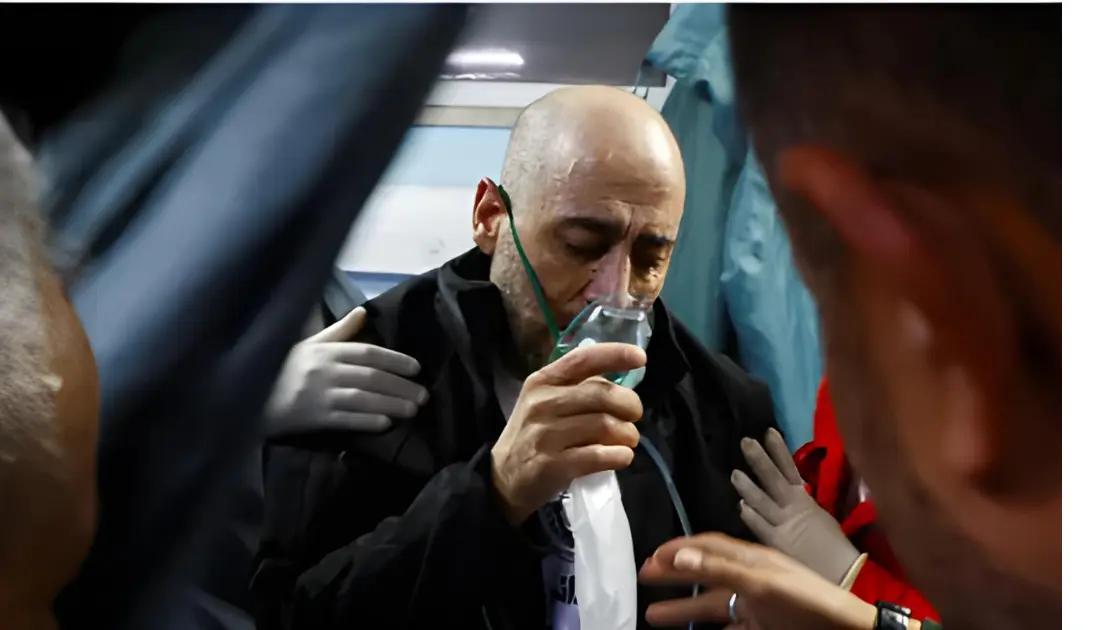In a tragic and shocking week for global aviation, a series of plane crashes claimed over 200 lives across South Korea, Kazakhstan, Canada, and Norway. The devastating incidents have sent waves of concern through the international community, raising significant questions about air travel safety and the measures in place to prevent such disasters. The aviation world, which has made significant strides in improving safety over the past few decades, is now facing an urgent call for enhanced scrutiny and reform.
Crash Overview
The incidents occurred within a span of just one week, creating a somber atmosphere among aviation professionals and the general public. Each of the crashes involved different circumstances, but the shared impact of these tragedies has had a profound effect on the global aviation community. While the details of each crash vary, they all share the common thread of tragic loss, with no survivors in some cases.
It has been a terrifying and dangerous week for the global aviation industry, with plane crashes in South Korea, Kazakhstan, Canada and Norway claiming the lives of more than 200 people. These serious incidents have drawn international attention and raised important questions about the safety of air travel and how to prevent such incidents. The aviation community has made significant improvements in safety over the past few decades, but now faces urgent calls for review and reform.
South Korea: The first such incident
The first such incident occurred in South Korea, when a commercial airliner crashed into a mountain shortly after takeoff. The plane was carrying 110 people, including passengers and crew, and disappeared from radar. Despite search and rescue efforts, it was determined that all 110 people on board were killed. The accident prompted an immediate investigation into the cause of the accident, but as of this writing, the cause remains unclear.
South Korea’s aviation industry, which has traditionally had a good safety record, has been shaken by the incident. Experts are beginning to focus on the possibility of malfunctions, extreme weather conditions, and human error that could have caused the accident. The incident has highlighted the need for greater attention to aircraft manufacturing, flight data analysis, and pilot training to prevent similar incidents in the future.
Kazakhstan: Deadly Shock
A few days after the fall of South Korea, tragedy struck Kazakhstan. In this case, a passenger crashed shortly after takeoff from Almaty International Airport. The plane, on a routine flight to Istanbul, encountered problems shortly after takeoff. All 98 people on board, including passengers and crew, were killed.
Kazakh aviation authorities immediately launched a full investigation focusing on possible causes, including weather and mechanical issues. Bad weather is reported, but it is not yet known whether this was a factor or whether there was a problem with the aircraft involved.
Canada: A major disaster
Following the incidents in South Korea and Kazakhstan, Canada has also experienced plane crashes. A small plane carrying six people crashed into a forest in rural Canada. While not as serious as the previous two incidents, the crash still injured everyone on board and raised concerns about the safety of small aircraft.
The crash in Canada has also led to calls for improved oversight of small private airliners, which lack the tight oversight of commercial airliners. The incident raises questions about piloting, aircraft maintenance and the reliability of older aircraft models, some of which do not meet today’s safety standards.
Norway: the final push
The latest development occurred in Norway, where a commercial flight from Oslo to Bergen crashed this morning. Reports indicate that the aircraft was a state-of-the-art model and had no mechanical problems prior to the crash. However, preliminary investigations suggest that several factors, including possible problems with the plane’s autopilot system, may have contributed to the crash.
The incident killed more than 200 people in just one week. The disaster has sent shockwaves through the aviation community, which was already on edge after another crash.
Impact on air safety
The scale of these aviation disasters raises serious concerns about the safety of international travel. Over the past few years, air travel has become safer and accidents have decreased. But a recent crash shows us that despite the use of technology, air travel is not without risks.
Investigators are now turning their attention to the problems in the aviation industry and the regulations that can cause such accidents. Experts are calling for stricter safety regulations, increased oversight of aircraft, large and small, and better training for pilots, especially those flying over rough terrain.
Public outcry and widespread concern
The crash has caused an international furor, especially among the victims’ families. The public is filled with grief and anger, questioning how such a disaster could have happened despite modern technology.
South Korea, Kazakhstan, Canada and Norway have called for greater transparency in the investigation and a clearer understanding of how the crash happened. The families and survivors are demanding answers and accountability from airlines and aviation authorities. There are also concerns about the wider impact on the future of air travel. Many passengers have expressed concerns about the safety of the economy, particularly international routes. More experience with airline safety information, flight delays and maintenance. While air travel is still one of the safest forms of international transport, some people are even considering other forms of transport.
Aviation industry space
In response to these incidents, the international airline industry has pledged to learn from these incidents and improve safety procedures. International aviation organizations such as the International Air Transport Association (IATA) and the International Civil Aviation Organization (ICAO) have issued statements reaffirming their commitment to safety and pledging to continue efforts to implement safety measures following an accident.
While companies and governments have taken steps to review safety measures, some countries have tightened inspections and controls over flight operations. The world’s largest aviation organization needs to increase training for pilots and cabin crew on emergency plans, risk assessment and coping with adverse conditions.
Investigations and Lessons Learned
As investigations into the crashes continue, the aviation community is focusing on key areas, including aircraft design, weather monitoring, and communication between pilots and air traffic controllers. There is a concerted effort to identify common factors in the incidents to prevent future disasters.
While it is too early to draw definitive conclusions, experts are paying close attention to technological failures, human error, and the role of environmental factors such as severe weather conditions. These investigations will likely lead to recommendations for new safety standards, further technological advancements in aircraft design, and even potential changes to global aviation regulations.
Conclusion: A Call for Enhanced Safety Measures
In conclusion, the series of devastating plane crashes within a single week has shaken the global aviation community to its core. The tragic loss of over 200 lives serves as a stark reminder of the risks involved in air travel. While air travel remains statistically one of the safest modes of transportation, these incidents highlight the need for continued vigilance and improvement in aviation safety.
As investigations into the crashes unfold, there will be a concerted effort to learn from these tragedies and implement measures to prevent similar accidents in the future. It is crucial that the aviation industry and regulatory bodies respond swiftly and effectively, ensuring that air travel remains safe and reliable for all passengers.
FAQs: Devastating Plane Crashes Shake Global Air Travel
1. What happened in the recent plane crashes?
In the past week, two devastating plane crashes occurred in South Korea, Kazakhstan, Canada, and Norway. These crashes have resulted in the loss of over 200 lives and raised global concerns about aviation safety. Authorities are investigating the causes, but preliminary reports suggest weather conditions and technical failures may have played a role.
2. How many people died in the crashes?
The plane crashes resulted in the tragic deaths of over 200 people across the four countries. The exact death toll varies depending on the incident, but all the crashes involved significant loss of life.
3. What caused the plane crashes?
Investigations are still ongoing, but initial reports indicate a combination of factors, including adverse weather conditions, technical malfunctions, and human error, may have contributed to the crashes. Each crash is being thoroughly examined by aviation experts to determine the exact causes.
4. How are airlines responding to the crashes?
Airlines worldwide are conducting internal reviews of their safety protocols, and many are cooperating with aviation authorities to ensure that their fleets meet the highest safety standards. Some airlines have temporarily grounded certain aircraft models pending further investigation into their safety.
5. What are the implications for global air travel safety?
The crashes have sparked widespread concerns about the state of air travel safety. While air travel remains one of the safest modes of transportation, the incidents highlight the need for continued investment in safety protocols, better weather forecasting technology, and more stringent maintenance checks for aircraft.
6. Will these crashes affect international travel regulations?
These devastating crashes may lead to increased scrutiny of international travel regulations and air travel safety standards. Airlines, governments, and regulatory bodies are expected to review existing protocols and may implement more stringent rules to enhance passenger safety in the future.
7. How are the families of the victims being supported?
Governments and airlines are providing support to the families of the victims. This includes offering financial compensation, emotional support services, and facilitating repatriation efforts for those affected by the tragedies. Crisis response teams are being mobilized to help grieving families through this difficult time.
8. What measures are being taken to prevent future crashes?
In response to these tragedies, aviation authorities are likely to implement stronger safety measures, including more rigorous aircraft inspections, better pilot training, improved weather monitoring systems, and a focus on preventive maintenance to address potential technical issues before they become disasters.
9. How can passengers stay informed about air travel safety?
Passengers can stay informed about air travel safety by following airline announcements, checking official aviation safety reports, and staying updated on new safety measures being implemented by airlines. Travelers are also encouraged to communicate with their airlines if they have concerns regarding their flights.
10. What can be done to prevent future plane crashes?
To prevent future crashes, airlines, manufacturers, and regulatory bodies must work together to address existing safety gaps, improve technology, enhance communication systems, and focus on proactive safety measures. The aviation industry must continue prioritizing passenger safety through ongoing research, training, and policy development.







